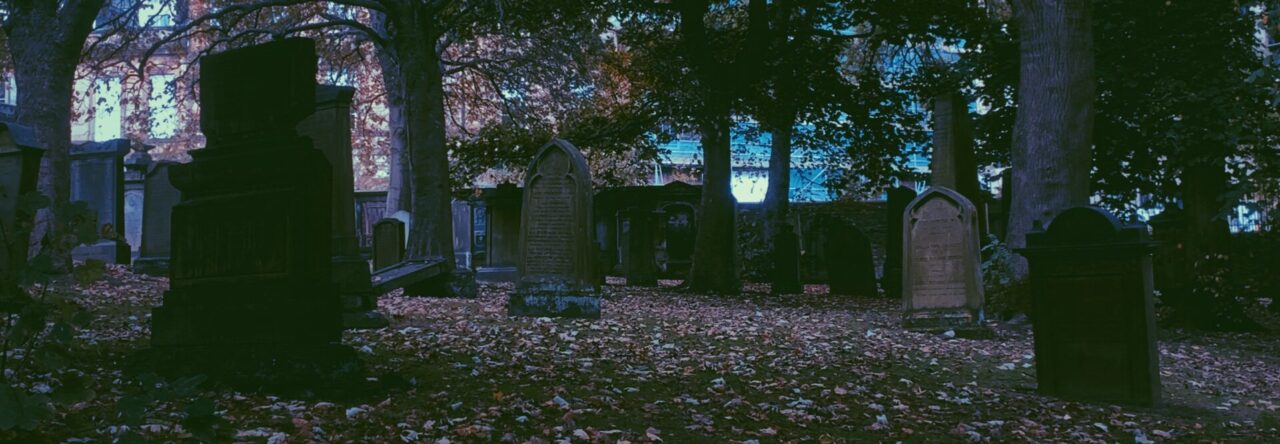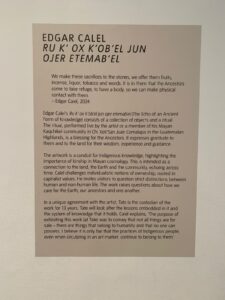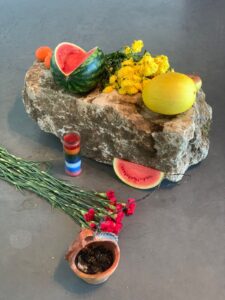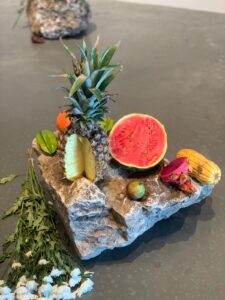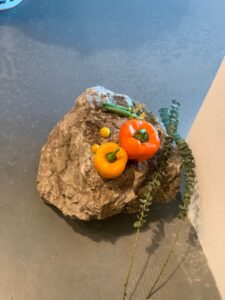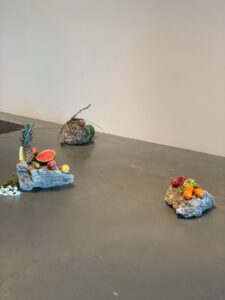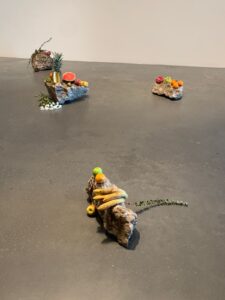Aura & Taksu
Walter Benjamin, in his influential essay entitled The Work of Art in the Age of Mechanical Reproduction written in 1936 mentioned the concept of Aura where he argued that ‘even the most perfect reproduction of a work of art is lacking in one element: Its presence in time and space, its unique existence at the place where it happens to be.’ In Nusantara, the concept of this aura has been present since before Walter Benjamin wrote his essay. Through the process of syncretism that occurred in Nusantara between the Hindu and local beliefs, the concept of Taksu is born, which is the concept of energy contained in various artistic expressions—fine art, music, literature, crafts, etc.—as a result of thought, experience, and understanding that results from years of perseverance in pursuing a field, particularly arts and crafts.
Indriyani parany ahur
indriyebhyah param manah.
manasas tu para budhir
yo buddheh pratas tusah.
Perfect your Indria,
but the perfection of the Indria is below the perfection of the mind,
the power of the mind is in the enlightenment of Budhi,
the most holy is Atman.
(Bhagawad Gita Gita IV.42).
In Balinese Hinduism, maintaining the health of the Indria (senses) to ensure their optimal function is a crucial daily endeavour. The senses are tools through which we experience joy and sorrow in life. However, healthy senses must be guided by an equally sharp mind. This mental sharpness is rooted in Budhi (wise spiritual awareness). The harmonious integration of the Indria, mind, and Budhi allows the purity of the Atman (soul) to manifest in one’s actions.
A person is called “mataksu” when their Indria, mind, and Budhi serve as channels for the Atman’s purity. The term “taksu” originates from “aksi” (to see), but it transcends mere physical sight. Multidimensional seeing involves observing not just with the eyes but also analysing with a sharp mind and reflecting deeply through spiritual contemplation. Only through this multidimensional perspective can one attain understanding, thus enables them to enter the mataksu state, and create a work that embodies taksu.
As I mentioned in my previous blog post, there is a feeling of ethical misconduct with my initial plan to reproduce artefacts to deliver my counter narratives I would like to present in my Final Project. Pramoedya Ananta Toer, an Indonesian writer who was nominated for Nobel in Literature once wrote in This Earth of Mankind (Buru Quartet, #1) his novel that is banned by the Indonesia New Order regime, “an educated person must be equitable ever since they start to think, and even more when they act.” And I felt that if I reproduce these artefacts, no matter how I justify my actions, not only that I fail to conjure the presence of the taksu in these artefacts, but I also am not thinking equitably, and thus my actions are too.
This may not come from a scientific perspective, but I wholeheartedly belief that if I want to deliver these counter narratives, I must start right from the beginning.
Kayu Gung Susuhing Angin | The Towering Wood Where the Wind Nests
In the wayang lakon (play) titled Dewa Ruci, Bratasena a.k.a Wrekudara a.k.a Bima sent by his teacher Dhayang Durna to look for Kayu Gung Susuhing Angin at Mount Candramuka when questioning about kawruh kasampurnan (knowledge of perfection). There he fought with two giants who were actually the incarnation of God Indra and Bayu and triumph over them but told that what he seeks is not there or anywhere to find. Failing to find kawruh kasampurnan in the physical form of Kayu Gung Susuhing Angin, he went back to his teacher and told to venture to Minangkalbu Ocean and find the Tirta Perwitasari. There, he fought against a giant dragon, after he slayed the dragon, Dewa Ruci appears and told him that what he seeks is once again, does not exist physically. This encounter leads him to realise that Tirta Perwitasari and/or kawruh kasampurnan is true happiness and perfection that fundamentally arise from within. Humans must balance their emotions appropriately to cultivate a sense of self-reliance. Bima is no longer bound by worldly desires, as he has attained a state of inner contentment. Holiness is understood as the human capacity to discern what is worthy and unworthy of being pursued (Dhoni Zustiyantoro et al., 2022).
In this play, Bima can be perceived as finding Kayu Gung Susuhing Angin while at the same time not finding it, due to the dualism in Javanese syntax where the sentence can be perceived literally as “The Towering Wood Where the Wind Nests”, while it can also be interpreted as “Great Desire is within the Breath” due to the word Kayu or wood can also mean kajeng or karep (desire), Gung taken from the word agung or ageng (Great), and Susuhing Angin or the wind nests can be interpreted as the human breath. It is a well known Javanese idiom that means great desires can only be realised when it’s accompanied with proper breathing (can be meditation, or praying) that gives us inner peace.
Inner peace is essential in Javanese culture, and the pursue of inner peace has been apparent in Javanese traditional practices through rituals like sajen (offering), burning incense, and the creation of making and performing various forms of arts and crafts which has socio-cultural purposes—more than just aesthetics—which is essential in the pursue of balance with the cosmos to attain said inner peace or contentment. However, nowadays Javanese culture is known to be closely related to superstition and the occult, due to colonial narrative’s simplification, exoticisation, and the result of Verenigde Oostindische Compagnie’s—also known as the VoC or the Dutch East Indies Company—infamous devide et impera tactic. Many people in Indonesia until now is still scared when they hear Javanese traditional songs, smell the incense from an offering, and prone to judge people who practice them, labelling them as heretic. This tactic has been used and proven effective by the VoC during the colonial era through framing all Indonesian Indigenous and Traditional practice—particularly Javanese—as “klenik” a word loosely translated to English as occult, to raise conflict between religious and practitioner of local beliefs. After Indonesia’s independence, sadly it does not get better, Wayang is used by political parties and figures to push political narratives which positions themselves or their party’s figure as Pandita Ratu (A Spiritually Wise King). All of this results in the antipathy of the public towards traditional culture. Fortunately, lately people—in particularly younger generation—has a better understanding of the importance of culture and many efforts has been done to reclaim and recontextualise these various cultural expression—Javanese culture such as Wayang (Shadow Puppet Theatre) included—to the people.
Merupa Rasa | To Form Rasa
In Indonesian language, rasa can be interpreted as taste, or feelings, such as rasa manis (the taste of sweet) or rasa sedih (the feeling of sadness). It is derived from Javanese, which has similar meaning but different nuance. Rasa in Javanese has a metaphysical undertone that can also describe things ranging from but not exclusively about feeling, inner meaning to perception, understanding, and intuition which is intertwined in Javanese society’s way of life (Benamou, 1998). Thus, I would like to manifest my rasa into the physical realm in the form of an activation.
In my previous blog, I mentioned about The Great European Museum (1993) article written by Kenneth Hudson where he views every town, village, landscape, country and even continent as a Great Museum in which everyone can discover their own roots and see how they fit into the chain of human activities. This solves my problem of the absence of collection, and combining Javanese concepts and philosophy in the making of this activation will enable me to practice knowledge co-creation, utilising the best of both Western contemporary science and Javanese Traditional Knowledge (Leete, 2022).
This activation will be designed to be enjoyed by public with all levels of understanding of Javanese culture, while at the same time encourage interaction between the activation, cultural bearers, and audience through activities that revolves around it through the utilisation of Wayang elements as a medium of the installation/activation to challenge the status quo of the populist narrative version of Javanese culture that is delivered through films, politics, and inaccurate religious interpretations.
Below are the elements in Wayang I plan to use for the activation to re-interpret and re-contextualise the Javanese traditional values narratives:
Kelir (Javanese: ꦏꦼꦭꦶꦂ)
Symbolising the sky, it is a stretched linen canvas acting as screen, dividing the dalang (puppeteer) and the spectator.
Blencong (Javanese: ꦧ꧀ꦭꦺꦚ꧀ꦕꦺꦴꦁ)
Symbolising the sun and the Dalang’s “divine eye” that illuminates the lakon (playwright), a coconut oil lamp—nowadays usually replaced by electric light—to casts shadows to the screen. Which will be replaced with a projector playing collected data sets in the form of interviews with several Javanese cultural bearers.
Gedebog (Javanese:ꦒꦼꦢꦼꦧꦺꦴꦒ꧀)
Symbolising the earth, it is a banana trunk between the screen and the dalang, used to hold puppets in place, which will be replaced with other object to hold 3 puppets in place.
Gamelan Orchestra, Pasindhen (female singers), Wirasuara (male singers), which will be represented with an audio recording played from a speaker.
Wayang Gunungan
Also known as Kayon, symbolises The Tree of Life and Macrocosm and Microcosm of Javanese belief, it is used to signal the beginning, transition, and ending of a Wayang performance.
Wayang Kamajaya & Kamaratih
Kamajaya & Kamaratih are The God and Goddess of Love and Harmony, they are a couple who represents the aesthetic energy and creative process of the cosmos in Javanese Culture, from the shapes of leaf, patterns of animals, and ideas of various cultural expressions thought and felt by human is governed by them.
Public Participatory Interaction
· The activation will be installed in the setting of a Wayang performance, and the displayed shadow puppets are allowed to be touched and used by the public if they want to act as a dalang, telling whatever story they want.
· A video of interview by cultural bearers such as Indra Suroinggeno, founder of the Sekartaji Wayang Beber Museum, Ki Sagio, a Yogyakarta style wayang kulit artisan who is also a Wedana (akin to manager) of the leather conservation department in the Keraton Ngayogyakarta Hadiningrat (The Yogyakarta Royal Palace), and Agus Ismaya & Nia Fliam, artist, experts in Javanese culture and creative practices, and founder of Babaran Segaragunung Culture House will be projected to the fabric to give cultural context of the real value and narrative of Javanese culture.
· An hour or two of one day during the exhibition of this activation/installation will be dedicated to a public program of live hybrid Wayang Suket (grass wayang) performance by Gaga Rizky, founder and creative director of Wayang Suket Indonesia or Wayang Beber performance by Indra Suroinggeno.
I understand that finding a venue to exhibit this activation here in Edinburgh might be challenging, so I have another plan to exhibit it at Babaran Segaragunung Culture House at Yogyakarta and document (photo and video) the whole process of the creating the activation. Afterwards, I will build a Digital Artefact in the form of an archival website where the research materials will be publicly available online for people to access, within it included but not finalised are:
· The activation’s curatorial rationale.
· Video Interviews and the transcripts.
· Photo and Video of the activation’s installation process.
· Link to the YouTube Live page for the Wayang Suket or Wayang Beber performance.
So far this is the form of Final Project I came up with and is still subject to minor change. I will be more than happy to hear some opinion from all of you! 🙂
Resources
Benamou, M. L. (1998). Rasa in Javanese Musical Aesthetics. Deep Blue (University of Michigan).
Benjamin, W. (2008). The Work of Art in the Age of Mechanical Reproduction. Journal of Philosophy of Education, 41(3), 363–380. https://doi.org/10.1111/j.1467-9752.2007.00579.x
Dhoni Zustiyantoro, Agus Nuryatin, Teguh Supriyanto, & Mukh Doyin. (2022). Luwes and Philosophical: Dewaruci Puppet Performance in Suryomentaram’s Kasampurnan Concept. Harmonia: Journal of Arts Research and Education, 22(2), 418–433. https://doi.org/10.15294/harmonia.v22i2.39209
Hudson, K. (2016). The Great European Museum. Nordisk Museologi, 0(2), 51. https://doi.org/10.5617/nm.3790
Leete, A. (2022). Finno-Ugric Indigenous Knowledge, Hybridity and Co-Creation in Research: The Komi Case. Journal of Ethnology and Folkloristics, 16(2), 86–103. https://doi.org/10.2478/jef-2022-0014
